This article became a two hour radio program which can be found following the text. A playlist providing discographical information for all of the sample tracks follows the article.
The arrival of George Gershwin on the Broadway scene, heralded by his hit song “Swanee,” marks 1920 as a critical year in the development of American musical theater and the integration of syncopation into the mainstream of American popular song.
Earlier this year, I contributed an article focusing on the recording of “Crazy Blues” by Mamie Smith and her Jazz Hounds, a significant event in the history of syncopated music that reached its centennial anniversary in 2020. I then hatched the idea of delving further into what the year 1920 had to tell us about the historical development of syncopation. At first glance, this inquiry seemed to reveal comparatively few landmark events from the 1920 season. Arguably, the prior year and the succeeding year contained more memorable moments for devotees of popular records and musical theater.
Looking more broadly, though, what stands out is how Americans in those years were living through a staggering amount of social and cultural change, a period of upheaval that rivals the boatload of troubles we are experiencing in 2020. The trends in music and entertainment reflected this tumult and provided a provocative soundtrack for a rapidly changing society. The music itself was also changing and evolving at great speed. (Seventy-eight revolutions per minute!)
Specifically, one can make the case that in 1920—or, so as not to pinpoint, between 1919 and 1921—New York’s popular music scene and the music heard on the Broadway stage took a decisive turn toward syncopated rhythm and melody, as well as an increasing sophistication in words and music. The combination of those two elements forms the essence of what we think of today as the “American popular songbook.” Reflecting on the early careers of Irving Berlin, Jerome Kern, and Gershwin, three great songwriters and native New Yorkers, may serve to capture what this kind of change sounded and felt like.
Syncopation’s Prelude
The story of the syncopated musical properly begins during the ragtime era. In the summer of 1898, Clorindy, or The Origin of the Cakewalk, with music by Will Marion Cook, lyrics and libretto by Paul Laurence Dunbar, opened in the Casino Theater’s roof garden to become the first African American production on New York’s “legitimate” stage. Cook and Dunbar then created several more musical comedies, including the Africa-themed In Dahomey (1903) and Bandanna Land (1908). The company headed by comedians Bert Williams and George Walker performed both these works in Broadway theaters.
After this strong start, syncopation’s promise went largely unredeemed for some time. The star of Clorindy, Ernest Hogan, died in 1909, the same year in which the dapper George Walker was stricken with syphilis and quit performing, passing away early in 1911. A drought of black talent lasting about a decade then descended on the New York theater, lifting only in 1921 when Eubie Blake and Noble Sissle’s Shuffle Along was that season’s greatest triumph.
Bert Williams, undoubtedly the nation’s first black entertainment celebrity, was the sole African American performer who remained known to the theater-going public in the 1910s. Without Walker, however, Williams was no longer so much a ragtime song-and-dance man as a comic vocalist, a solo act who headlined the Ziegfeld Follies throughout the decade. Since the Follies consistently had the most opulent production values of any New York entertainment, though, Williams remained highly visible.
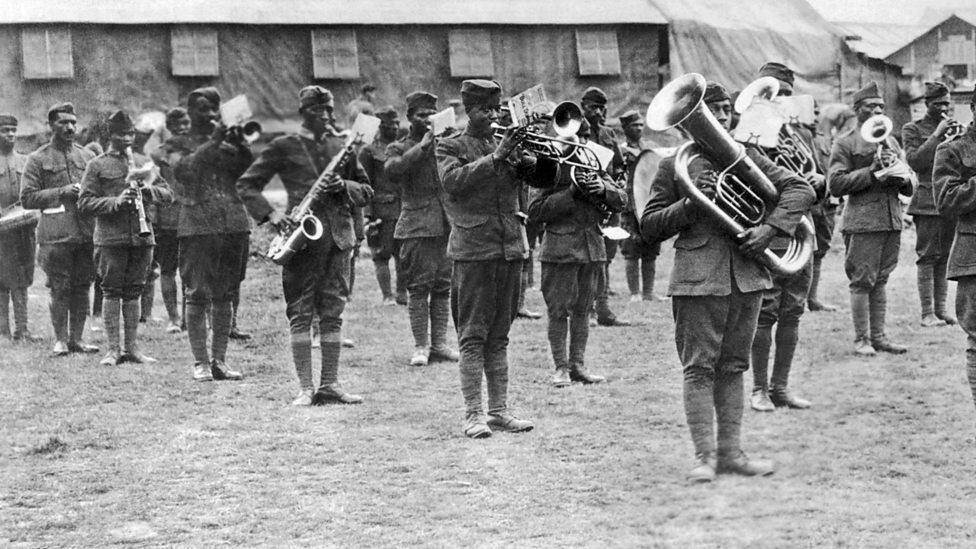
The other most prominent African American music man of the period was the bandleader James Reese Europe, founder of the Clef Club, a highly successful fraternal organization for musicians. In February 1919, Lieutenant Europe brought his Harlem Hell Fighters, the 369th Infantry Band back from overseas action in a victory parade. Three months later, Europe was shockingly murdered by a fellow musician. This tragedy undercut the Clef Club’s dominance in New York’s syncopated music scene.
Even in the absence of African American representation in elite theatrical venues, syncopated music made major strides between 1915 and 1920. Ragtime was reaching the end of its era of greatest popularity, while younger performers such as New York’s stride piano “professors” and Gus Haenschen of St. Louis were giving syncopated music a hotter kind of rhythmic drive.
These were also the years in which both jazz and blues issued forth as distinct styles and began spreading beyond black communities. For example, a group of pale-skinned musicians from New Orleans made some of 1917’s biggest hit records under the name the Original Dixieland Jass Band. “Jazz” was evolving from a salacious slang word into a recognizable, raucous musical idiom.
Meanwhile, tunes such as W.C. Handy’s “St. Louis Blues,” “Hesitation Blues,” and “Yellow Dog Blues” were recorded by multiple, non-African American dance bands and vocalists before 1920. Jazz and blues were still in their infancy, of course, but their moment had arrived.
Syncopation’s Sociology
Apart from their inherent musical appeal and energy, what made the broader public so immediately receptive to jazz and, somewhat more gradually, to blues, was the way their frenetic beat seemed to match the new pulse of modern life. It’s worth dwelling on this point. It can be difficult to hold in mind the sheer degree of social turbulence and the whirlwind of radical change with which Americans, especially those in the burgeoning big cities, were contending in the second half of the 1910s.
Among many destabilizing events during those years, one whose significance we are now in a position to appreciate was the deadly influenza pandemic of 1918-19. Also, after two decades of extremely high immigration levels, the nation’s ethnic composition had shifted radically. The Great Migration of some six million African Americans from the states of the former Confederacy to the northeast and midwest was in full swing.
The friction occasioned by these population shifts brought about episodes of racially motivated violence in dozens of U.S. cities, provoked by a revived Ku Klux Klan and peaking in the “Red Summer” of 1919. The victory of the Bolshevik “reds” in Russia two years earlier unnerved elites in every industrial society, raising the stakes for strikes in a period of intense labor conflict.
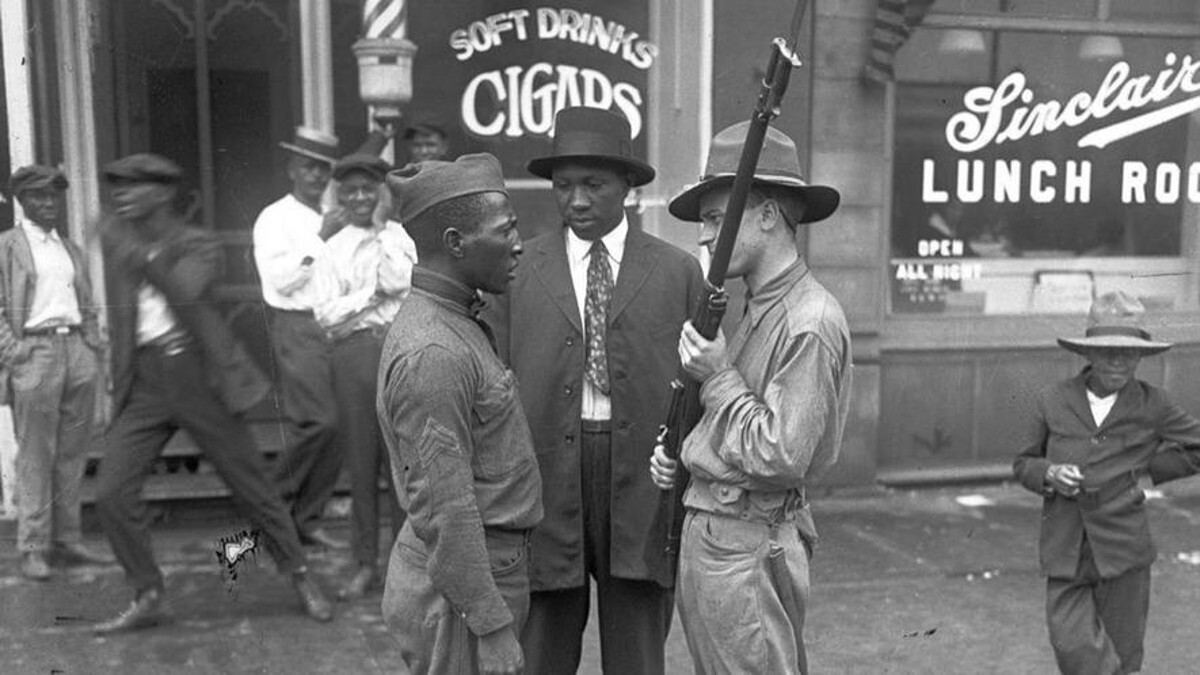
Modernization and technology were transforming the basic conditions of daily experience. The streets were suddenly teeming with motorcars, the skies streaked with aeroplanes. Speed was in vogue. The telephone had begun to alter longstanding norms of communication and social interaction. Electric lighting transformed the urban landscape by night, turning Manhattan’s theater district into “the Great White Way,” a playground in the new world. The rise of motion pictures, maturing from a novelty into an art form, posed a threat to the cultural primacy of live theater and vaudeville entertainment.
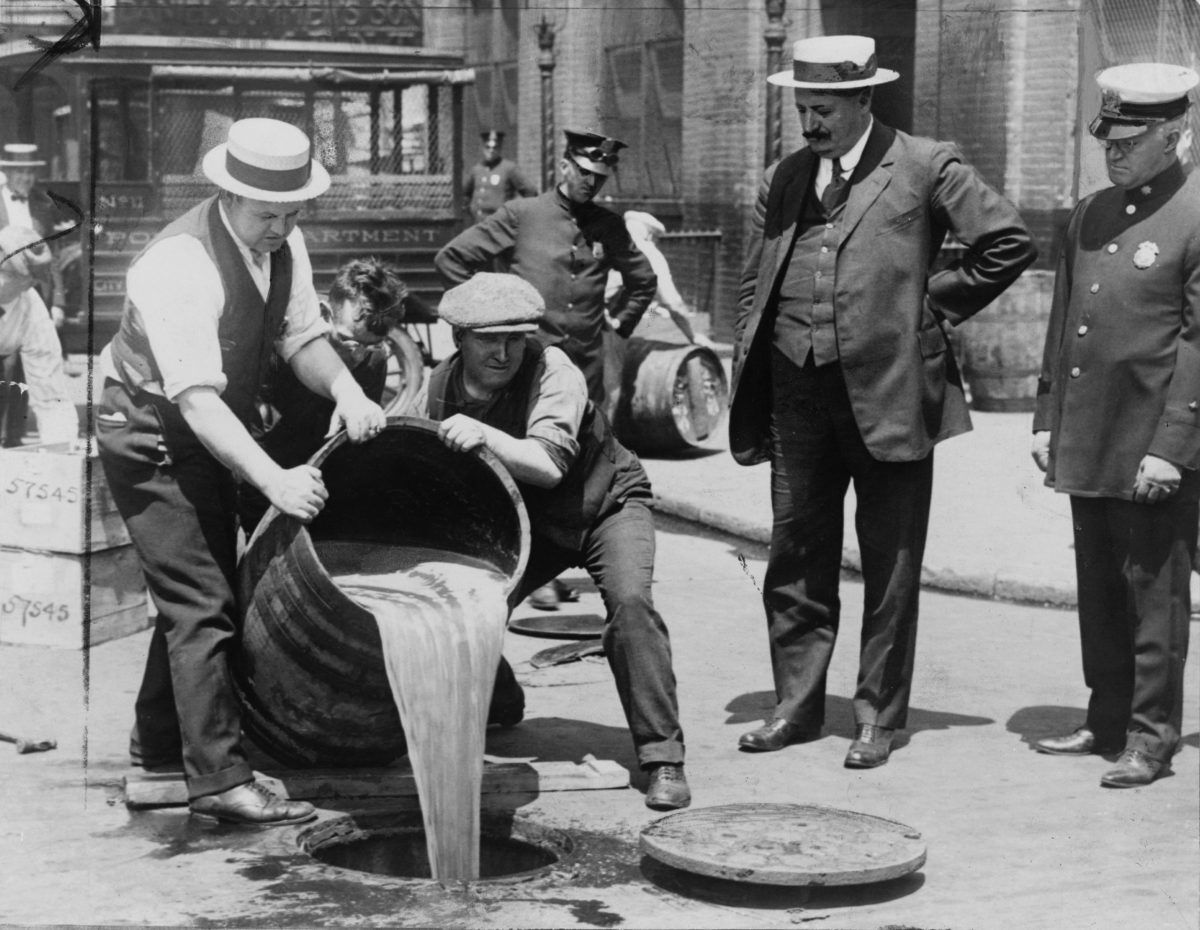
An even greater shift in the patterns of urban night life came in January 1920, when the Volstead Act came into effect. Prohibition had a major impact on the conditions of live music performance and attendance. More broadly, U.S. life under the Eighteenth Amendment turned masses of ordinary citizens into outlaws, sparked an explosion of organized crime, and appeared to signal that the rule of law was subject to erosion. Gangsters had corrupted the baseball World Series the prior fall.
Syncopated, African-derived hot music seemed to speak to these trends, particularly the decadence and illicit hedonism of the speakeasy. Gender relations were in flux as the triumphant women’s suffrage movement indicated the growing confidence of what some were calling “the new woman.” Many perceived these changes as a loosening of sexual mores and a weakening of antiquated Victorian social and moral restrictions.
Probably the single greatest agent of change in this period was the Great War in Europe. Even before the United States entered the war in 1917, wartime conditions were accelerating African American migration toward jobs in the northern industrial centers. Among the many developments ushered in by World War I was the origination of modern propaganda methods in the government’s campaign to secure enlistment and public support for the war. Think of the famous “I Want You” Uncle Sam poster from 1917, for example, part of an overt effort to manufacture popular support for the martial cause.
African Americans enlisted in their tens of thousands. Like them, many immigrants saw and took advantage of a chance to contribute to the country in its time of need and thus, hopefully, accrue a greater stake in the democratic enterprise. Many thousands of black servicemen returned home after serving in segregated units, only to find the Klan and lynchings still on the rise. For them, the reality of a stratified society put the lie to the national myth of unity amidst diversity.
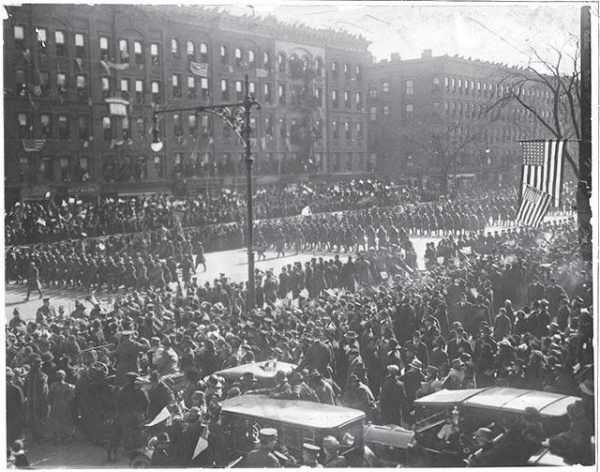
Ragtime, America, and Berlin
That myth, however, would not be dislodged, for it served a valuable purpose in the perennial task of constructing an impression of a national spirit and a collective American identity. Music was an essential tool in this persuasive effort, and no individual devoted himself more assiduously or productively to erecting this national mythology through music than a Russian-born Jewish immigrant named Israel Beilin, who drew up—straight from the melting pot—the monicker Irving Berlin.
Berlin’s first songs, stemming from about 1907, fell in step with the flag-waving sentiments of George M. Cohan, Broadway’s leading song-and-dance man of the time. They sought to advance a modern American style of popular song, overflowing with twentieth-century pep. Many of these early efforts were, in essence, musical ethnic jokes, so-called “coon” songs, “wop” songs, and “yid” songs, such as “Yiddle on Your Fiddle, Play Some Ragtime”—all in fun, as it were, and intended to spice up the gumbo simmering on the melting pot.
A more blatant attempt to appropriate the popularity of syncopation was “Alexander’s Ragtime Band,” which invoked the name of ragtime while partaking only lightly of its musical features. “Alexander” was, in fact, a fine Tin Pan Alley march in the Cohan mode, interpolating the musical clichés of the bugle call and Stephen Foster’s “Swanee River.” It became a mega-hit on stages across the country and in sheet music sales in 1911.
Largely on the strength of this tune, Berlin became closely associated with the revival and further diffusion (or, some would say, commercial dilution) of ragtime in the 1910s. He swiftly produced a sheaf of songs to take advantage of his growing reputation as the “ragtime king,” with titles such as “Ragtime Soldier Man,” “The Syncopated Walk,” “Syncopated Cocktail,” etc.
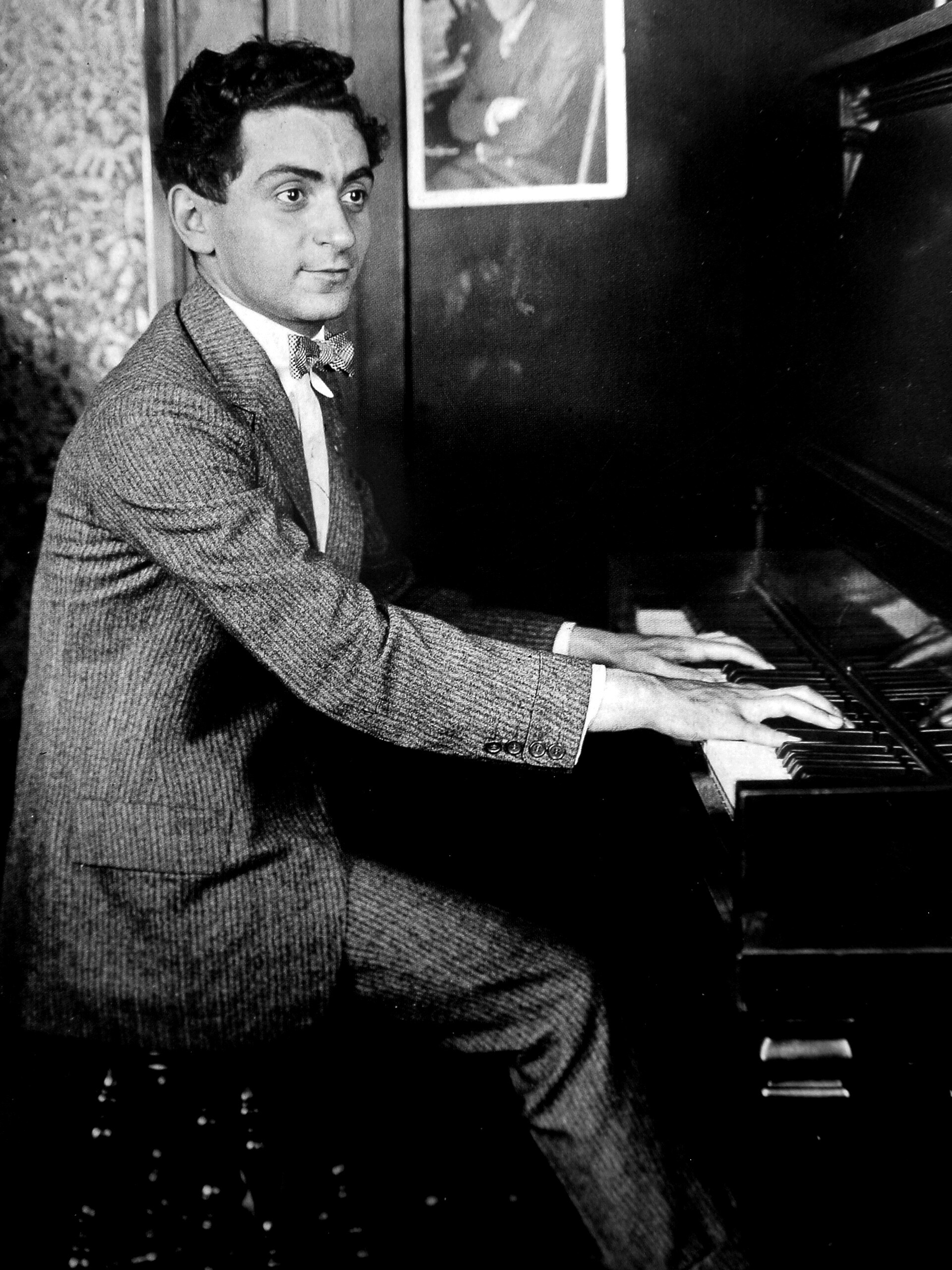
Around 1913, he boasted to an interviewer that he had “established the syncopated ballad.” This prescient comment implies a conscious intent to use syncopation to create a fusion of what were considered two quite distinct song forms, the ballad and the up-tempo rhythm number. Such an amalgamation is a key ingredient of the jazz-age American popular songbook.
It would be inaccurate to say Berlin wrote rags; in fact, he readily confessed that he never truly understood what ragtime precisely was. But he did master and employ several deft tricks of syncopation in his melodies, usually accentuated by the simple yet pungent syntax of his lyrics. You can hear it in the way the rush of sixteenth notes in the middle of “The International Rag” (1913) illustrate the point made in the lyrics: “all hands are dancing to a raggedy melody full of originality.”
The listener can’t miss the tricky triplets in the opening bars of “Everybody Step,” the signature “jazzy” production number from Berlin’s 1921 Music Box Revue. The “A” section of “Puttin’ on the Ritz” (1930) may contain the most recognizable use of syncopation among Berlin’s well-known standards. Other examples are easy to find. More generally, the slangy urban lexicon in Berlin’s lyrics, his aggressive use of assonance, inner rhyme, and other lively verbal effects, constantly reinforce the infectious, “catchy” quality of the rhythmic pulse with which all his work is stamped.
Equally as important as Berlin’s association with ragtime was his association with the United States of America and its national culture. This was true as early as “Alexander’s Ragtime Band” and remained so throughout his six-decade career. Jeffrey Magee argues in his superb book Irving Berlin’s American Musical Theater (2012) that the songwriter viewed ragtime as “the musical and linguistic passport to his adopted country.” Not only did syncopation comprise the irresistible formula for concocting e pluribus unum, it could even be said to have conquered the globe on behalf of this American ideal: “the world goes ’round to the sound of The International Rag.”
The Great War’s arrival gave Berlin the chance to test the mettle of his Tin Pan Alley patriotism. While his idol Cohan hit the bull’s eye in April 1917 with the hit march “Over There,” Berlin contributed at least two popular numbers that year attempting to channel ethnic pluralism into wartime patriotism: “For Your Country and My Country” and “Let’s All Be Americans Now.”
Berlin was naturalized, then (naturally) drafted in early 1918, and while in uniform managed to produce and perform in a revue that made it to Broadway, entitled Yip, Yip, Yaphank. When the Second World War came around, Berlin adapted this material into the musical This Is the Army (1942). Jerome Kern was not exaggerating when he said, around 1925, that “Irving Berlin has no place in American music—he IS American music.” (And this is not to speak of “God Bless America,” written originally for Yaphank but shelved until 1938, when its emergence proclaimed a new chapter in American myth-making.)
Jazz and Dancing Paws: Watch Your Step
By 1919, ragtime’s value on the cultural marketplace had diminished, increasingly supplanted by the terms jazz and blues and the new musical developments they signified. All the social tumult described above may help us comprehend just why African American music made such notable strides from 1919 to 1921, with more authentically indigenous artistic forms surpassing the popularity of the now-commercialized ragtime. Equally important, Americans of pale hue had also begun responding more deeply to syncopated African American music—responding, that is, from the waist down.
Another crucial factor to include in examining the spread of syncopation is the revolution in dance that accompanied and helped drive it. The most well-known ragtime dance, the cakewalk, was deeply associated with minstrelsy, thoroughly pre-modern in its aesthetic, and embraced by few dancers who weren’t black. The color line in dance grew fainter in the 1910s, however, as the “animal” dance fad played out, and the turkey trot, grizzly bear, bunny hug, etc., evolved into a keeper, the fox trot.
We can understand this progression as the frantic, so-called “primitive” movements arising from early attempts to adapt European American dance styles to musics rooted in African American syncopated rhythm, gradually leading to a genteel, so-called “civilized” accommodation.
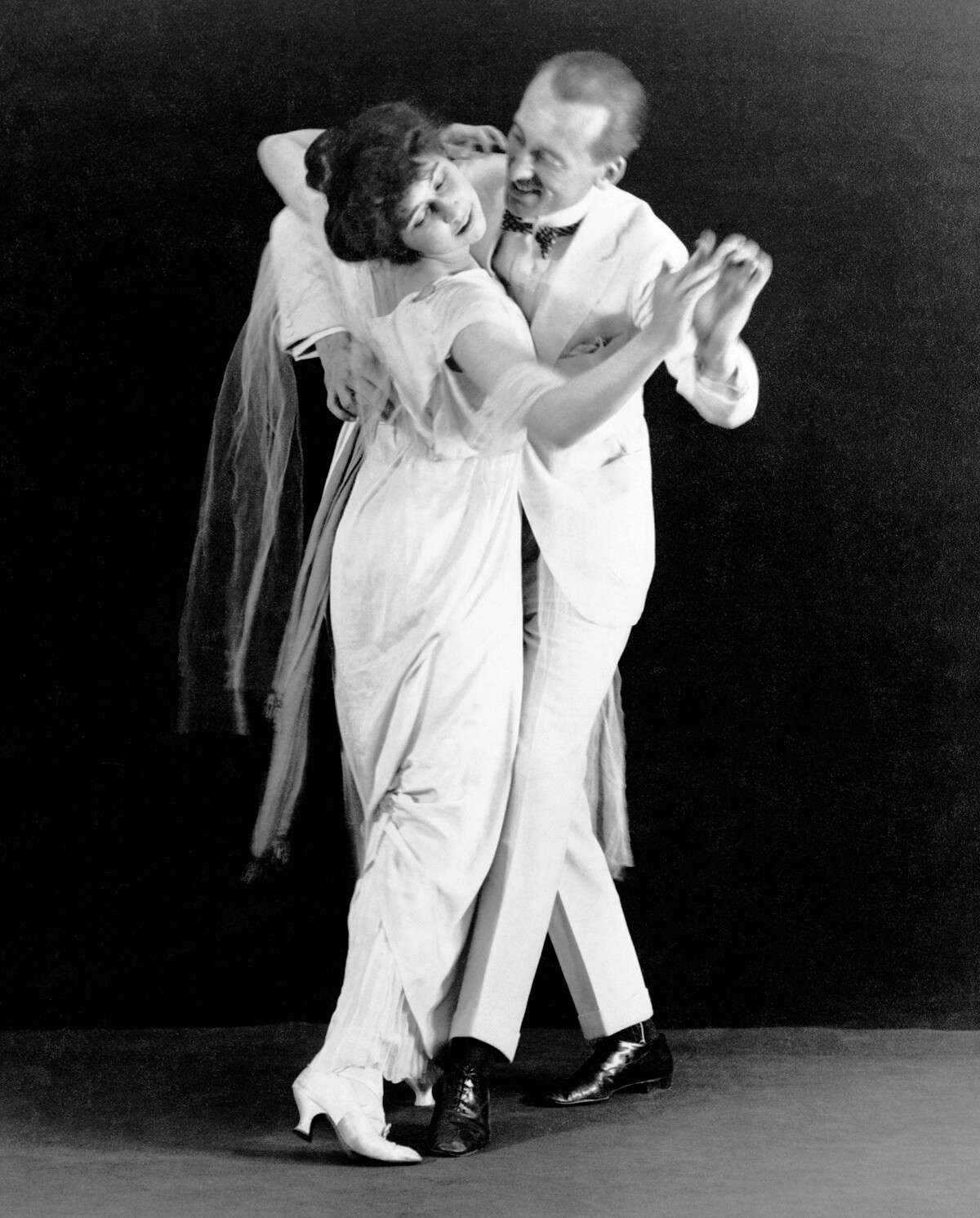
Leading the way in this genuinely heroic cross-cultural enterprise of “taming” the animal steps was the decade’s reigning dance couple, Mr. and Mrs. Vernon and Irene Castle. Along with their musical director James Reese Europe and Europe’s Society Orchestra, the Castles showed that heterosexual couples could dance together gracefully to the new syncopated music, in public social settings and in the theater.
The Castles played starring roles in a 1914 revue, Watch Your Step, that was Irving Berlin’s breakthrough in writing for the stage. In a huge, perhaps unprecedented move for a songwriter, Berlin had ascended from Tin Pan Alley to Broadway, penning his first full theatrical score in a hit show that was hyped as the “first syncopated musical.”
Before 1920, Berlin appears to have viewed jazz as little more than a new, faddish word he could add to his lyrical lingo, as in the Berlin song “Mr. Jazz Himself” (1917). For a brief period in the early 1920s, however, some critics considered Berlin to be not only a jazz composer but one of the premier ones, thanks to tunes such as “Everybody Step.”
By the end of the 1910s, Berlin had already accumulated as much success as any previous U.S. composer. Increasingly, he sought to shift away from writing for the popular song market and concentrate on theatrical work, which brought greater prestige. In all likelihood, he was inspired in this direction by the success his contemporary Kern was enjoying in the field of musical comedy. Born in Manhattan in 1885, Jerome David Kern got his start as a songwriter a few years earlier than Berlin; in 1904, a pair of his melodies were interpolated into the Broadway run of a British play. Soon he was contributing numerous songs to imported British musicals.
Kern and Broadway Taxonomy
Syncopation was never a strong element in Kern’s compositions. Nevertheless, he made a pivotal contribution to the eventual triumph of syncopated music in the American theater. To properly understand his importance in this history, a glance at the variety of types of musical theater on offer in these years is worthwhile.
Numerous sub-genres of staged musical entertainment existed, with somewhat fluid distinctions between them. To some extent, this range reflected gradations in social class among segments of the theatrical audience—a serious matter, especially as regards New York society.
On one end of this spectrum lay operetta, the most prevalent and well-established of the popular musical genres, yet indisputably a European import. At the other end were found variety presentations packaged in different forms, rooted culturally both in European music-hall fare and, on the U.S. side, in the minstrel tradition.
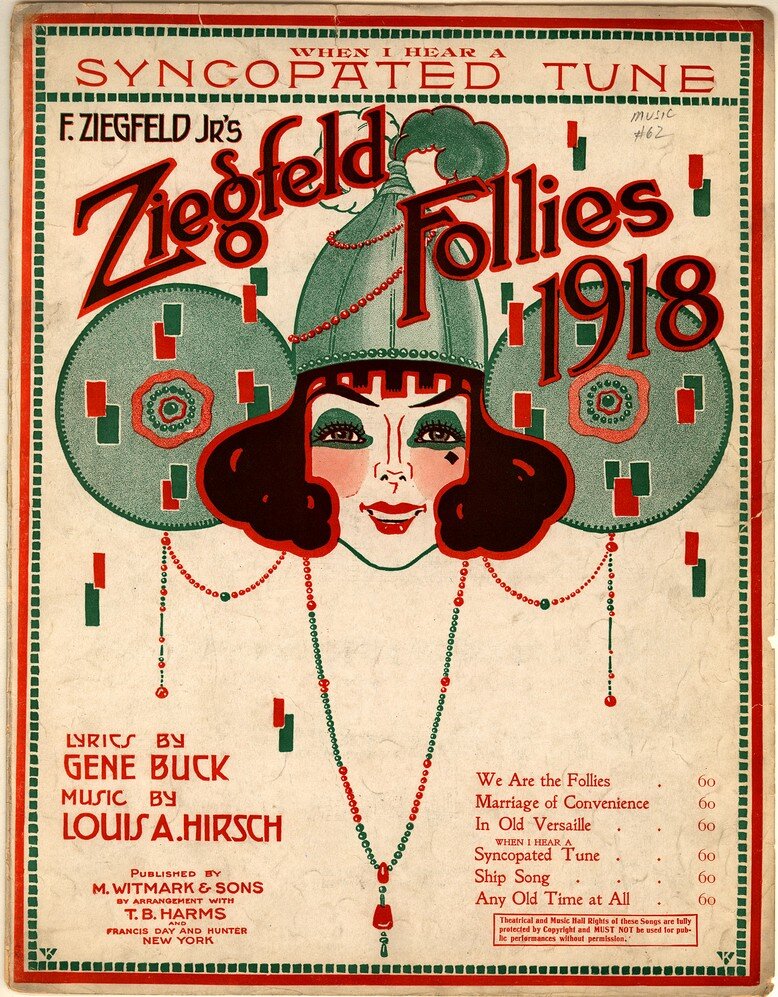 Vaudeville, and its somewhat less respectable cousin, burlesque, were popular formats for presenting a number of diverse traveling performers and acts on a single evening’s bill. Revues constituted the most glamorous iteration of the variety show on Broadway stages, exemplified by the Ziegfeld Follies (which was modeled on the floor shows at the Folies Bergère in Paris). Berlin’s staged work of the 1910s was virtually all in the revue format.
Vaudeville, and its somewhat less respectable cousin, burlesque, were popular formats for presenting a number of diverse traveling performers and acts on a single evening’s bill. Revues constituted the most glamorous iteration of the variety show on Broadway stages, exemplified by the Ziegfeld Follies (which was modeled on the floor shows at the Folies Bergère in Paris). Berlin’s staged work of the 1910s was virtually all in the revue format.
The book musical dwelled somewhere in the middle of this taxonomy, descending from traditions such as comedy and farce. Most book musicals of the early twentieth century had very thinly plotted narratives and made little to no effort to connect musical numbers to their settings, characters, and stories in a naturalistic manner.
Kern’s talents as a melodist placed him very near the most well-reputed of the operetta composers, such as Victor Herbert and Franz Lehár. The best of his compositions exude a sophistication and a type of musical grace and purity: “Kern’s music leaves one feeling not just good but noble,” writes Wilfrid Sheed in his book The House That George Built. This exalted quality seemed to distinguish his work from the popular dross churned out in profusion by the Tin Pan Alley publishers. Indeed, Kern was hired by New York’s most prestigious publisher of popular music, the T.B. Harms company.
A key example of Kernian sophistication is the beautiful song “They Didn’t Believe Me,” first heard on Broadway in The Girl From Utah (1914). That tune and another placed in the same show, “You’re Here and I’m Here,” left the young prodigy George Gershwin thunderstruck when he heard them played at a wedding in 1915. Gershwin later said this experience persuaded him that the songs of superior quality and harmonic complexity were the ones coming from musical comedies.
The body of work Kern produced in the 1910s aimed to advance the book musical genre while Americanizing it—or at least Anglo-Americanizing it, for he continued working on both sides of the pond and his work retained traces of an “English accent” for many years. Still, more than anyone, Kern built the bridge leading from the operetta to the modern American musical, retaining a few operetta conventions but updating its plots and settings.
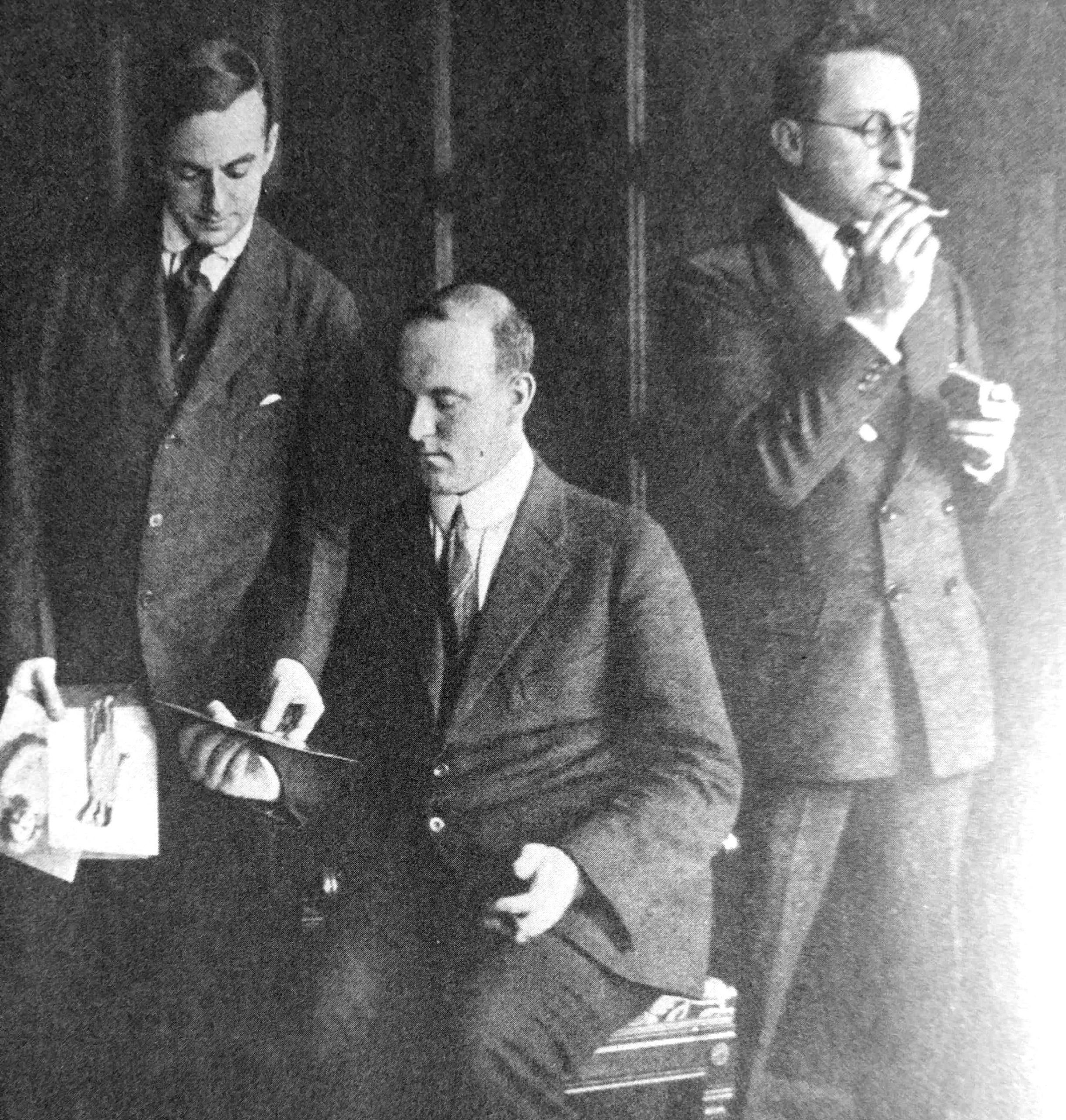
Kern shares the credit for elevating the book musical with his colleagues Guy Bolton and the British novelist P.G. Wodehouse. This team was responsible for seven musical productions mounted in a small Broadway house, the Princess Theatre, between 1915 and 1918. The Princess shows, such as Very Good Eddie and Oh, Boy!, were the first U.S. musicals to aim at a tight integration of dialogue, music, and lyrics, bringing them closer to non-musical comedy and drama. This model reached fruition in 1927 with Kern’s Show Boat, whose landmark score, written with Oscar Hammerstein II, embraces some syncopation and blues elements, plus a nod to the Negro spiritual with “Ol’ Man River.”
The Long 1920 Season (1919-1921)
One important Kern work along the road to Show Boat, the hit musical Sally, opened in late 1920. Sally resembled the Princess shows in its plot and structure but was mounted on a grander scale. Florenz Ziegfeld produced the musical as a vehicle for his Follies star Marilyn Miller, who sang the show’s most memorable song, “Look For the Silver Lining.”
As an aside, the songwriting partners Richard Rodgers and Lorenz Hart, who contributed immensely to the elevated sophistication and syncopation of American theater music, made their professional debut in 1920 with six songs in the musical comedy Poor Little Ritz Girl. In the same year, Rodgers and Hart scored the Columbia University Varsity Show along with a third collaborator, Hammerstein, who would reunite with Rodgers in the 1940s and ’50s to create a few shows you might be familiar with.
Despite the progress in musical comedy (not forgetting the aforementioned Shuffle Along, the surprise hit of the 1921 season), the revues were still setting the pace for theatrical music in the 1919-1921 period. These were the peak years for the Broadway revues, which ranged from intimate affairs to glitzy extravaganzas. The 1919 edition of the Ziegfeld Follies, with Berlin as principal composer, was widely viewed as the producer’s greatest achievement. In that production, Berlin introduced the song that perfectly captured Ziegfeld’s zeal for “glorifying the American girl”: “A Pretty Girl Is Like a Melody.”
Instead of trying to top this success working for Ziegfeld in 1920, Berlin took a different tack. With business partner Sam H. Harris, George M. Cohan’s former producer, Berlin bought a piece of midtown Manhattan real estate and began building the Music Box, the first New York theater expressly designed to stage the work of a single composer. By 1921, Berlin and Harris were ready to mount the first of four annual Music Box Revues, giving the tunesmith his first taste of exercising creative control over a professional production and greatly burnishing Berlin’s star power. The show’s running theme song, “Say It With Music,” and the heavily syncopated “Everybody Step” were its most memorable compositions.
Ziegfeld acquired a rival in the high-class revue category in 1919; this was the year that former Ziegfeld dancer George White put on the first of his annual Scandals shows. White made headlines the following year by hiring a young composer to furnish the entire score for the 1920 Scandals. That composer, the 21-year-old George Gershwin, was undoubtedly a rising star. A sought-after accompanist, rehearsal pianist, piano roll recording artist (he had already made rolls of several Berlin and Kern tunes), and former office pianist at the Remick music company, he was now on the payroll of T.B. Harms.
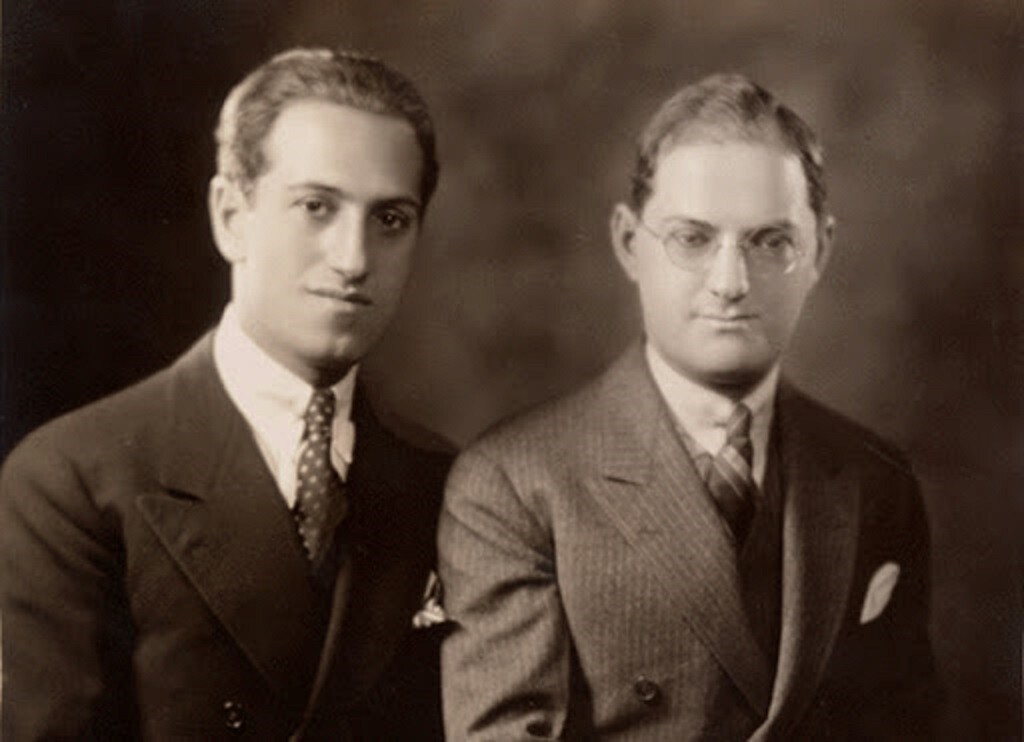
Perhaps the one quality that most set the young Gershwin apart from Berlin and Kern was his familiarity with and appreciation for African American music and musicians. In his teenage years he lived in upper Manhattan and visited Harlem frequently. Both before and after he began making piano rolls for the Standard and Aeolian companies, he met and fraternized with several of New York’s best piano ticklers, such as Eubie Blake, James P. Johnson, and Luckey Roberts. Furthermore, these men regarded him as a musician of their caliber in his improvisation skills as well as composition abilities. The message of syncopation flowed naturally and unmistakably from Gershwin’s fingers. He knew intrinsically what he and brother Ira proclaimed in the first song they ever wrote together, in 1918: “the real American folk song is a rag.”
Another black musician Gershwin befriended in his youth was Will Vodery, a prominent composer and conductor and chief orchestral arranger for the Ziegfeld Follies. Their relationship was close enough that when Gershwin needed work in 1917, Vodery helped him land his first position in the theatrical milieu as rehearsal pianist for an upcoming Ziegfeld revue, Miss 1917. This big-budget production featured tunes by Victor Herbert as well as the composer Gershwin idolized, Kern, and a Bolton-Wodehouse libretto.
With a New Step Every Day: Gershwin Ascends
Gershwin and Berlin met a little later, in 1919, when Berlin offered his composition “That Revolutionary Rag” to T.B. Harms for publication; Gershwin sat down to play the brand new tune and immediately improvised an improvement on its chord progression. Introducing himself, he offered his services for the position of Berlin’s musical secretary, to which Berlin, to his everlasting credit, reportedly replied, “What the hell do you want to work for anybody else for? Work for yourself!”
Gershwin told Vodery he wanted to work on “production music—the kind Jerome Kern was writing.” The theater, he understood, not only had greater prestige than other outlets for popular music, it also had the richest artistic possibilities. He had a few songs interpolated into shows and was invited by a young producer to score what would be marketed as “the New Up-to-the-Minute Musical Comedy of Class and Distinction.” La La Lucille opened on Broadway in May 1919 and topped 100 performances, a modest success, though none of its songs made much of a hit.
Not to worry, for the youth born under the name Jacob Gershovitz was about to ride the wave of the biggest number-one hit he’d ever write. It was a somewhat uncharacteristic effort for Gershwin, a one-step, conceived by him and lyricist Irving Caesar in an attempt to pen an American version of an exotica piece such as one of that moment’s passing hits, “Hindustan.” The result of this exercise, “Swanee,” found its way into one revue before it reached the ears of Al Jolson, who grabbed it for his own show Sinbad and recorded it on January 8, 1920, a few days before the Volstead Act went into effect. All of a sudden the name young Gershovitz had adopted, and his song, were in big letters on the cover of Variety. Like Irving Berlin had in “Alexander’s Ragtime Band,” “Swanee” struck gold by trading cleverly on a reference to, and syncopated update of, one of the biggest pop hits of the prior century.
Gershwin, in other words, had made a forceful entrance into the world of Broadway by 1920, even before his first George White’s Scandals score reached audiences’ ears. He didn’t produce another notable hit until his third effort for White, a big production number for the 1922 Scandals, “I’ll Build A Stairway to Paradise.” A number of critics consider this song, progressing dramatically up the scale in the verse and landing heavily on blue notes in the chorus, one of the earliest to be imprinted with Gershwin’s identifiable stylistic traits.
Gershwin wrote many elegant melodies in a mode reminiscent of Kern: one clear example, I submit, would be “He Loves and She Loves” from 1927’s Funny Face. He also did a few self-consciously ultra-syncopated pieces à la Berlin, such as “Fascinating Rhythm” (from Lady Be Good, 1924). His own, utterly unique style, both as a pianist and a composer, expresses a majestic synthesis of Kern’s gifts for melody and harmony, Berlin’s gifts for vitality, simplicity, and popular appeal, and the unleashed power of syncopation as found in jazz and the black music traditions.
Gershwin wrote another notable piece for the 1922 Scandals: the Blue Monday suite, his first endeavor toward writing a “vaudeville opera” in a Negro idiom, a full decade before he and DuBose Heyward began work on Porgy and Bess.
George White removed the 20-minute sketch, with a cast of singers backed by Paul Whiteman’s orchestra, from the revue right after its opening night in New York, on the grounds that its somber storyline left the audience too downcast to enjoy the other acts. Working together on Blue Monday led directly to Whiteman requesting an instrumental piece from Gershwin for his “experimental” February 1924 Aeolian Hall concert, the Rhapsody in Blue.
In sum, the contributions of Berlin, Kern, and Gershwin were all necessary to usher in the turn toward classic, syncopated Broadway show tunes beginning right around 1920. Berlin introduced an early, ersatz form of syncopation, one unmoored from its African American derivation. He successfully deployed this new form of musical verve in an abstractly (or mythologically) “American” context—a context that was more or less consciously in service to the construction of a positive or idealized self-image for the nation. In that sense, we may say Berlin “Americanized,” and/or co-opted or diluted or subverted or commercialized, ragtime while popularizing it.
No quotation marks are needed to say Kern Americanized the narrative-based musical, blazing a path from the musical aesthetics of operetta and the British music hall to American popular song and setting the template for artistically successful musical comedies.
Gershwin capitalized upon and extended both of these achievements. He infused the electricity of true syncopation and jazz and blues feeling into musical theater, as well as into popular song and even “serious” music. The era of Gershwin represents a giant step toward enshrining syncopation at the heart of authentic American music.
A two hour radio program was made from the ideas, music tracks, and contents of this article. It may be heard below.
Playlist
The files linked below are hosted at either The Library of Congress National Jukebox Project, The UC Santa Barbara Cylinder Record Archive, Wikipedia, or Jazz-on-line.com. They are in order of first mention in the article.
| Al Jolson | Swanee, January 1920 | 78917 | Columbia A2884 | MP3 |
| Mamie Smith And Her Jazz Hounds | Crazy Blues NY, Aug 10, 1920 Mamie Smith (vcl) acc by Johnny Dunn (cnt) or Addington Major (cnt) Dope Andrews (tb) Ernest Elliott (cl,ts) prob. Willie “The Lion” Smith (p) Leroy Parker (vln) |
7529-C | OKeh 4169 | MP3 |
| Al Bernard | St. Louis Blues NY, Nov 1, 1919 | 7000-A | Edison BA 3930 | MP3 |
| Al Bernard | Hesitation Blues, NY, 1919 Billy Smythe, Scott Middleton, Al Bernard | DD-6621 | Edison BA: 3738. |
MP3 |
| Harry Radermann’s Jazz Orchestra | Yellow Dog Blues NY, Jan 9, 1920
|
DD-7103 | Edison BA-3991 | MP3 |
Compare to:
| Bessie Smith And Her Blue Boys | The Yellow Dog Blues NY, May 6, 1925 Bessie Smith (vcl) acc by Joe Smith (cnt) Charlie Green (tb) Buster Bailey (cl) Coleman Hawkins (ts) Fletcher Henderson (p) Charlie Dixon (bj) Bob Escudero (tu) |
140586-2 | Columbia 14075-D | MP3 |
And:
| The Washingtonians | Yellow Dog Blues NY, Jun 25, 1928 Arthur Whetsel, Bubber Miley, Louis Metcalf (tp) Joe Nanton (tb) Barney Bigard (cl,ts) Johnny Hodges (as,sop,cl) Harry Carney (bar,cl,as) Duke Ellington (p) Fred Guy (bj) Wellman Braud (b) Sonny Greer (d) |
E27771-A | Brunswick 3987 | MP3 |
| Arthur Collins and Byron G. Harlan. | Alexander’s Ragtime Band NY, 1911 Arthur Collins and Byron G. Harlan |
399 | U.S. Everlasting: 399 | MP3 |
| Unidentified Male | Swanee Rive, c. 1898
|
80338-A | Lioret: 66 | MP3 |
| Edward Meeker | Ragtime Soldier Man, 1913 | 80338-A | BA: 1618 | MP3 |
| The Peerless Quartet | The Syncopated Walk Feb 24, 1915 Collins, Arthur – Burr, Henry-Campbell, Albert – Meyer, John H. – McClaskey, Harry | B-15733/238-A | Victor 17748. | MP3 |
| Billy Murray | The International Rag, 1913 | BA: 2078 | MP3 |
| Paul Whiteman And His Orchestra | Everybody Step NY, Oct 21, 1921 Henry Busse, Tommy Gott (cnt) Sam Lewis (tb) Ross Gorman (cl,as) Hale Byers (sop,ts) Don Clark (as) Ferde Grofe (p,arr) Fred Cook (vln) Mike Pingitore (bj) Jack Barsby (tu) Harold McDonald (d) Paul Whiteman (dir) |
25664-4 | Victor 18826 | MP3 |
| Fred Astaire | Puttin’ On The Ritz London, Mar 26, 1930 Fred Astaire (vcl,tap dancing) Max Goldberg (cnt) prob. Ted Heath (tb) Van Phillips (cl) Sid Bright (p) Len Fillis (g) Spike Hughes (b) |
WA-10227-2 | Columbia (E)DB-96 | MP3 |
| Indestructable Make Quartet | Over There, 1917 | IND: 3412 | MP3 |
| Conway’s Band | For Your Country and My Country, 1917 | B-20378/2 | Victor 18345 | MP3 |
| Arthur Hall | Let’s all be Americans Now, 1917 | DD: 5419 | Edison BA 3201 | MP3 |
| Kate Smith | God Bless America, 1939 | Victor 26198 | MP3 |
| Irving Kaufman | Mr. Jazz Himself, Aug 8 1917 | Columbia A2360 | MP3 |
| Gladys Rice and Walter Van Brunt | They Didn’t Believe Me, 1915 | DD: 4123 | BA: 2759 | MP3 |
| Kathleen Kingston and Billy Murray | You’re Here and I’m Here, 1914 | BA: 2253 | MP3 |
| Bix Beiderbecke And His Gang | Ol’ Man River Chicago, Jul 7, 1928 Bix Beiderbecke (cnt) Bill Rank (tb) Irving Friedman (cl) Min Leibrook (bassax) Roy Bargy (p) Harry Gale (d) |
W400994-A | OKeh 41088 | MP3 |
| Vincent Lopez And His Orchestra | Look For The Silver Lining NY, Jan 7, 1930 pers uncertain except Jack Parker (vcl) |
9261-1 | Banner 0557 Imperial 2253 |
MP3 |
| Ziegfeld follies of 1919 | A Pretty Girl Is Like A Melody Steel, John: vocalist, tenor vocal Rattay, Howard: instrumentalist, violin Pasternack, Josef: conductor |
B-23026/5 | Victor 18588 | MP3 |
Compare to:
| Andre Ekyan | A Pretty Girl Is Like A Melody Paris, Mar 22, 1940 Andre Ekyan (as) Django Reinhardt, Pierre Perret (g) Emmanuel Soudieux (b) |
OSW116-1 | Swing (F)194 | MP3 |
| Red Nichols And His Five Pennies | Say It With Music NY, Aug 22, 1929 Red Nichols, Mickey Bloom, Tommy Thunen (tp) Glenn Miller, Herb Taylor (tb) Jimmy Dorsey (cl,as) Rube Bloom (p) Tommy Felline (bj) Joe Tarto (tu) Dave Tough (d) |
E-31270 | Brunswick 4651 | MP3 |
| All Star Trio | Hindustan 1919 Wallace, Oliver; Weeks, Harold. Saxophone, xylophone, and piano. | DD 6253 | Edison BA: 3645 | MP3 |
| Lanin’s Jazz Band | I’ll Build A Stairway To Paradise Paris, Mar, 1923 Will Lanin (p, ldr) | Pathe? 1727251 | MP3 |
| Ella Fitzgerald | He Loves And She Loves Hollywood, Jan 5,7 & 8, 1959 Ella Fitzgerald (vcl) acc by Nelson Riddle’s Orchestra : pers incl Don Fagerquist (tp) Bob Cooper (ts) Alvin Stoller (d) + strings and several others, Nelson Riddle (arr,cond) |
22625-6 | Verve MGV4027 | MP3 |
| Fred And Adele Astaire | Fascinating Rhythm London, Apr 19-20, 1926 Fred Astaire, Adele Astaire (vcl) acc. by George Gershwin (p) From the stage musical “Lady Be Good” |
WA3184-1 | Columbia (E)3969 | MP3 |
| George Gershwin | Rhapsody in Blue June 10, 1924 With Paul Whiteman’s Orchestra, Ross Gorman clarinet | Victor 55225 | MP3 |
Roger Kimmel Smith is a freelance wordsmith (www.smithmeaword.com) based in Ithaca, New York. He’s written many musician profiles for Contemporary Black Biography. His all-20s/30s program “Crazy Words, Crazy Tune” airs Friday Afternoons (12-2pm) on WRFI Community Radio (www.wrfi.org).






















